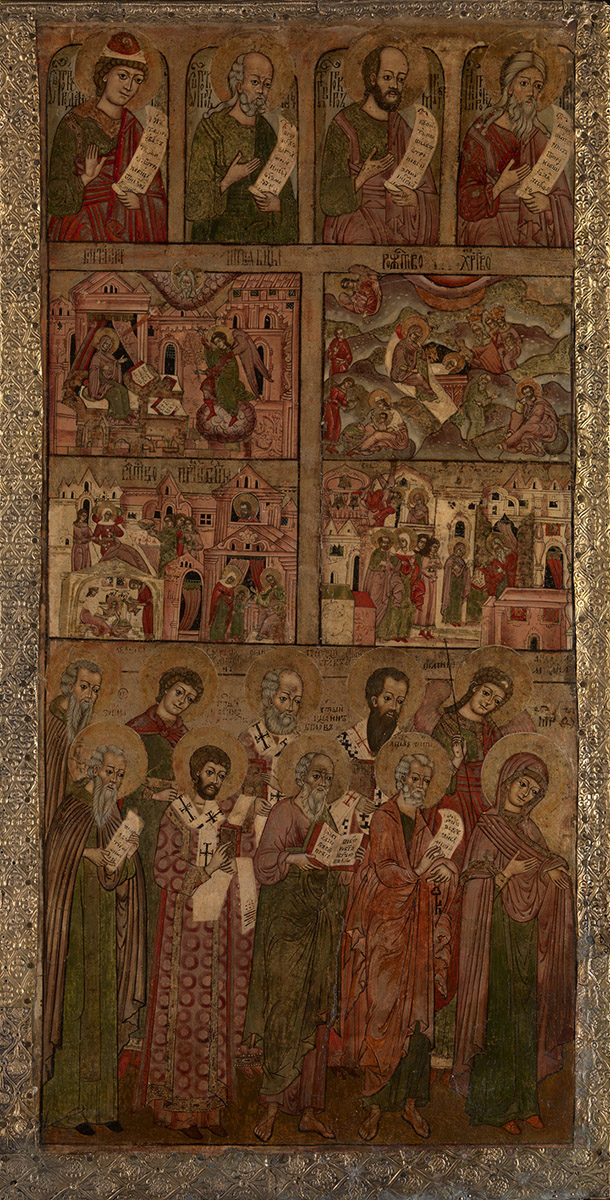MacDougall Auctions 2-3 December 2009
2 December 2009

73. A SECTION OF AN ICONOSTASIS IN A BASMA
KARGOPOL, CIRCA 1700
85 by 43 cm.
40,000-50,000 pounds
The panel is a unique example of a large folding icon, imitating an iconostasis, painted on three panels and uniting the three main Tiers: the Deisis, Feasts, and Prophetic rows. Such iconostases could have been used for small churches, private chapels or monastic cells; however, no complete item of this kind survives from such an early date. This icon is the left panel of a triptych, as is clearly demonstrated by the contents of its scenes. The Deisis Tier
begins with the image of the Mother of God, interceding before the throne of Christ Pantocrator, which means that it must have been placed on the left next to the central part of the triptych. At the same time, the Feasts Tier consists of early scenes from the cycle of the Virgin’s life, which excludes the possibility of another panel further to the left. The content of the Deisis, depicted on two rows in checkerboard order, is notable as it includes, alongside many other holy hierarchs, two wonder-working monastics, the father-founders of famous Russian monasteries: St Zosimas and St Sabbatius.
Another rare feature of the painting, apparently caused by the need to incorporate all the twelve main festive scenes, is the double tier of the church feasts. Originally, there were four feasts on each panel, beginning in the lower row and continuing in the upper one: the Nativity of the Virgin and the Presentation of the Virgin in the Temple (below) should be read first, followed by the Annunciation and the Nativity of Christ (above). The twelve prophets were also placed in groups of four on each fold of the triptych, within special semi-circular arches. The iconography of this panel includes numerous details borrowed from Western art, widespread in Russia from the late 17th century, such as the blossoming branch in the hands of the archangel, who brings the glad tidings whilst standing on a cloud, and the seated Virgin in the Nativity of Christ episode. The extended versions of the feasts also use mirror imagery, i.e., the Annunciation facing the Nativity of Christ. The painting is notable for its artistic features, such as the muted liquid palette with the heavy use of green and pink tones and of vermilion and white; the voluminous, high-relief rendering of the faces; the sophisticated agglomeration of architectural forms, tightly incorporated into the scene-frames; and the characteristic domed mountains. All these elements testify to the art of the Kargopol region, masters of which (judging by the choice of the saints) were responsible for painting this rare icon.
Notes on symbols:
* Indicates 5% Import Duty Charge applies.
Ω Indicates 20% Import Duty Charge applies.
§ Indicates Artist's Resale Right applies.
† Indicates Standard VAT scheme applies, and the rate of 20% VAT will be charged on both hammer price and premium.